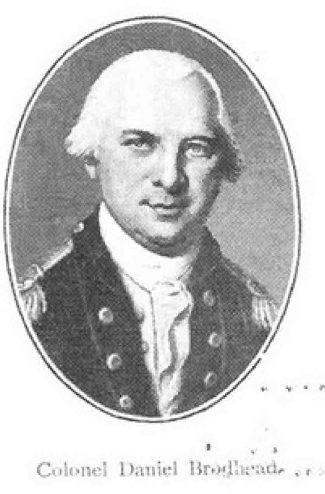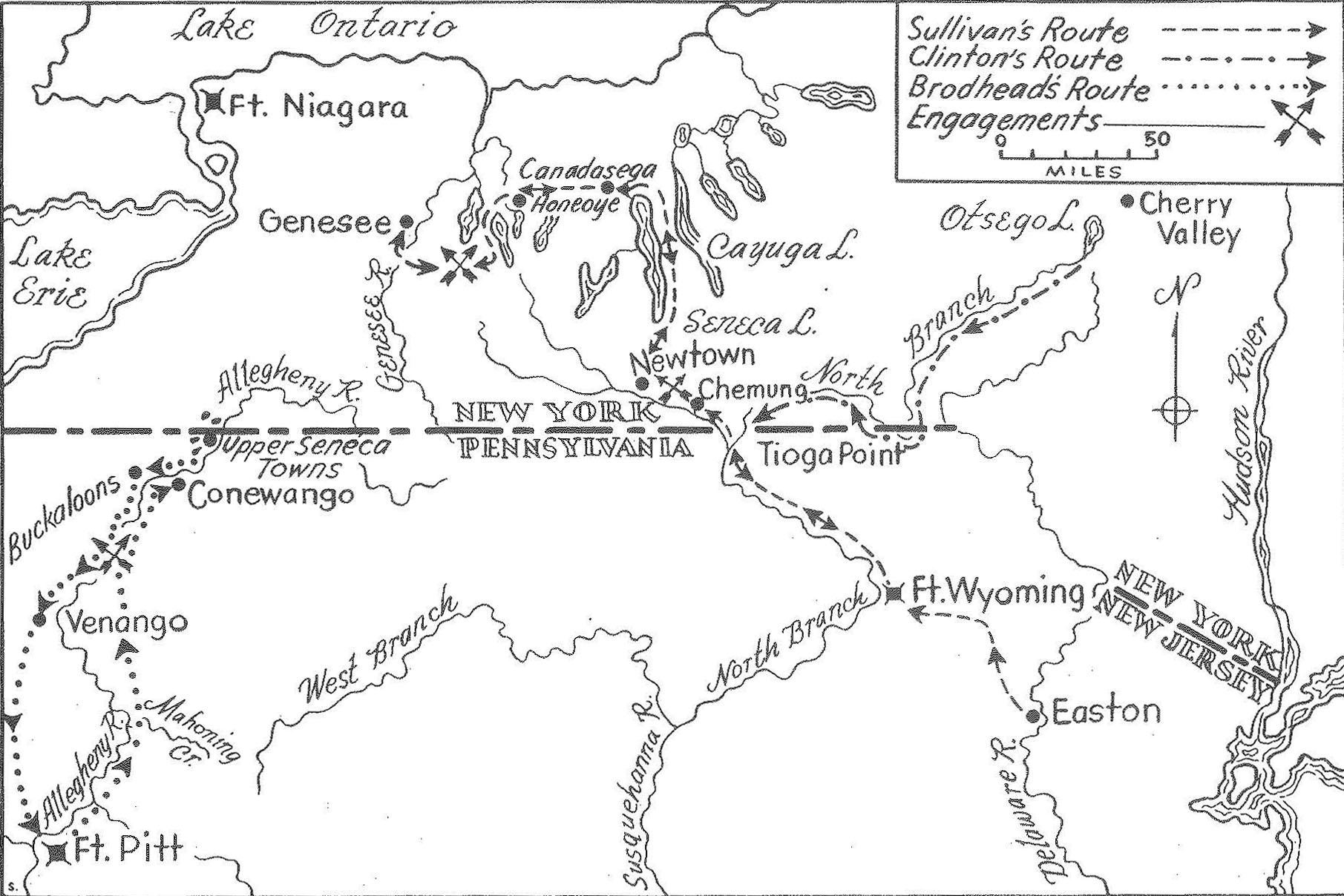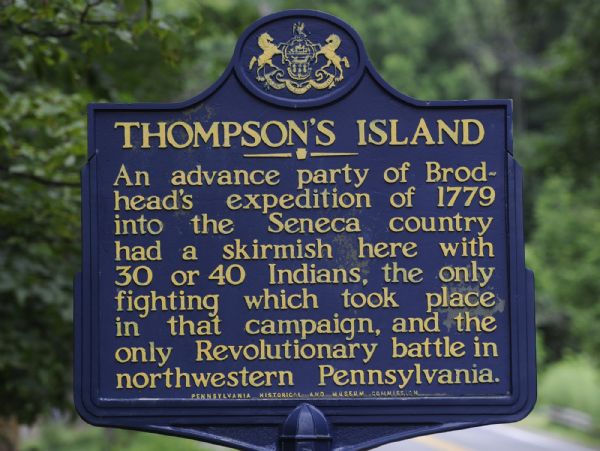 The American Revolutionary War was a monumental time in history. Today, students across the nation learn about everything from the Boston Massacre and the signing of the Declaration of Independence to the creation of the U.S. Constitution. Historical events that transpired in Western Pennsylvania, however, are often overlooked. During the Revolution, routine conflicts in Western Pennsylvania erupted between colonists and American Indians allied with the British.
The American Revolutionary War was a monumental time in history. Today, students across the nation learn about everything from the Boston Massacre and the signing of the Declaration of Independence to the creation of the U.S. Constitution. Historical events that transpired in Western Pennsylvania, however, are often overlooked. During the Revolution, routine conflicts in Western Pennsylvania erupted between colonists and American Indians allied with the British.
The Six Nations of the Iroquois Confederacy, comprised of the Seneca, Cayuga, Onondaga, Oneida, Mohawk, and Tuscarora Nations, were split concerning their response to the American Revolution. Due to previous alliances and the stronger possibility of maintaining territory, most of the Nations supported England, which in turn encouraged raids on frontier settlements. Colonial generals, then, were responsible for protecting and defending colonists on the frontier.
 In early March of 1779, George Washington wrote to Daniel Brodhead and placed him in command of Fort Pitt: “From my opinion of your abilities, your former acquaintance with the back Country, and the knowledge you must have acquired upon this last tour of duty, I have appointed you to command in preference to a stranger, who would not have time to gain the necessary information between that of his assuming the command and the commencement of operations.”
In early March of 1779, George Washington wrote to Daniel Brodhead and placed him in command of Fort Pitt: “From my opinion of your abilities, your former acquaintance with the back Country, and the knowledge you must have acquired upon this last tour of duty, I have appointed you to command in preference to a stranger, who would not have time to gain the necessary information between that of his assuming the command and the commencement of operations.”
Soon after, Brodhead led an expedition to stop the threat of American Indian raids on the frontier. Brodhead and his colonial troops traveled up the Allegheny River on their expedition against the Seneca Indians. He was confronted with the same issues that previous generals had faced before him: shortages of supplies, food, and men. By mid-April, Washington recognized the difficulties Brodhead and his men faced. He ordered Brodhead to cease operations and return to Fort Pitt.
After returning, General Brodhead continued to do what he could to decrease the threat of American Indian raids. In one such instance, he sent out a regiment led by Samuel Brady to expel nearby American Indians that lived along the Allegheny River. Such actions brought fear to the American Indians, who began to leave the area. Meanwhile, two other campaigns were in progress on the frontier. In a strategic attempt to divert the enemy’s attention from these campaigns, Washington requested that Brodhead resume his expedition along the Allegheny.
 On Aug. 11, 1779, Brodhead and 605 men, from the 8th Pennsylvania and 9th Virginia Regiments, marched north toward Conewago. The ensuing encounter became known as the Battle of Thompson Island, the only Revolutionary War battle fought in northwestern Pennsylvania. In a letter to Washington, Brodhead described the incident: “Ten miles this side of Conewago, Lieut. John Hardin and advance guard discovered thirty or forty of the enemy descending the river in canoes. Immediate preparation made for action in which five of the Indians were killed and several wounded. Their party suffered only slight wounds.”
On Aug. 11, 1779, Brodhead and 605 men, from the 8th Pennsylvania and 9th Virginia Regiments, marched north toward Conewago. The ensuing encounter became known as the Battle of Thompson Island, the only Revolutionary War battle fought in northwestern Pennsylvania. In a letter to Washington, Brodhead described the incident: “Ten miles this side of Conewago, Lieut. John Hardin and advance guard discovered thirty or forty of the enemy descending the river in canoes. Immediate preparation made for action in which five of the Indians were killed and several wounded. Their party suffered only slight wounds.”
However, it is possible there was no formal confrontation between Broadhead and Seneca Indians, especially since much of the written evidence is one-sided. Jay Toth, tribal archaeologist of the Seneca Nation of Indians and part of the Pennsylvania Historical and Museum Commission’s project to locate the battle site, states, “Our people have always said this was a hunting party, not a war party, and in moments before…they were camped with their canoes beached and were surprised in some way.”
After the Battle of Thompson Island, Brodhead’s troops proceeded to Conewago, where they found abandoned Seneca towns. Without a guide to help his men go farther north, Brodhead returned to Fort Pitt and his men sacked and burned empty American Indian towns along the way. He described their return journey in a letter: “Three days were occupied in destroying standing corn and burning houses. Booty to the value of $30,000 was taken. On the return, Conewago, Buckloons and Mahusauchikoken were burned.”
Brodhead and his troops returned to Fort Pitt on Sept. 14, 1779. His expedition was one of several in Western Pennsylvania during the American Revolution. These expeditions aimed to protect frontier colonists from the threat of American Indians and made up a large part of Western Pennsylvania’s role in the Revolutionary War.
Further Reading
- “From George Washington to Colonel Daniel Brodhead, 5 March 1779,” Founders Online, National Archives, last modified June 29, 2017. [Original source: The Papers of George Washington, Revolutionary War Series, vol. 19, 15 January–7 April 1779, ed. Philander D. Chase and William M. Ferraro. Charlottesville: University of Virginia Press, 2009, pp. 365–367.]
- Kellogg, Louise Phelps. Frontier retreat on the upper Ohio, 1779-1781. Vol. V. Draper Series. The Society Madison, 1917.
- Moyer, Ben. “What Happened at Thompson Island.” Pittsburgh Quarterly Magazine – What Happened at Thompson’s Island? 2016. Accessed July 27, 2017.
Hannah Brandebura was the Fort Pitt Museum volunteer intern during the summer of 2017.